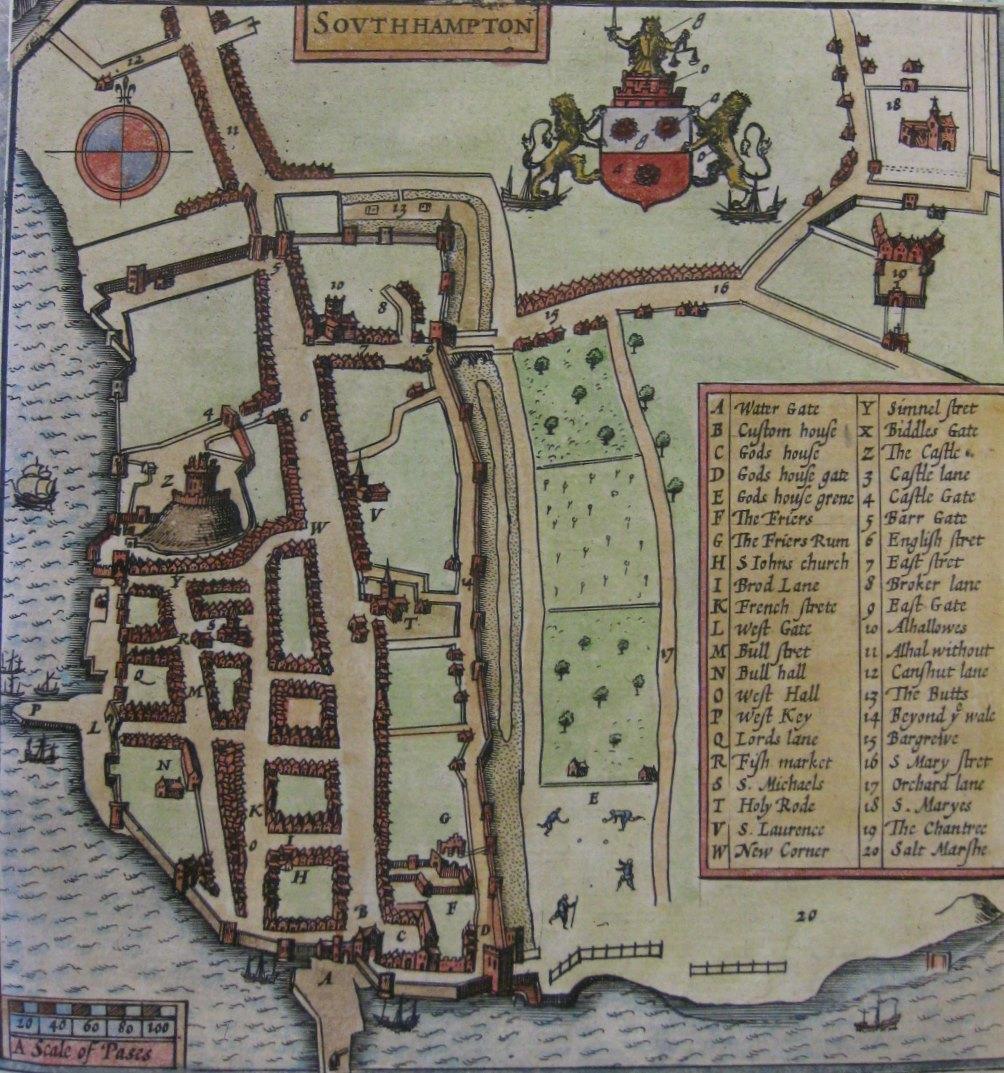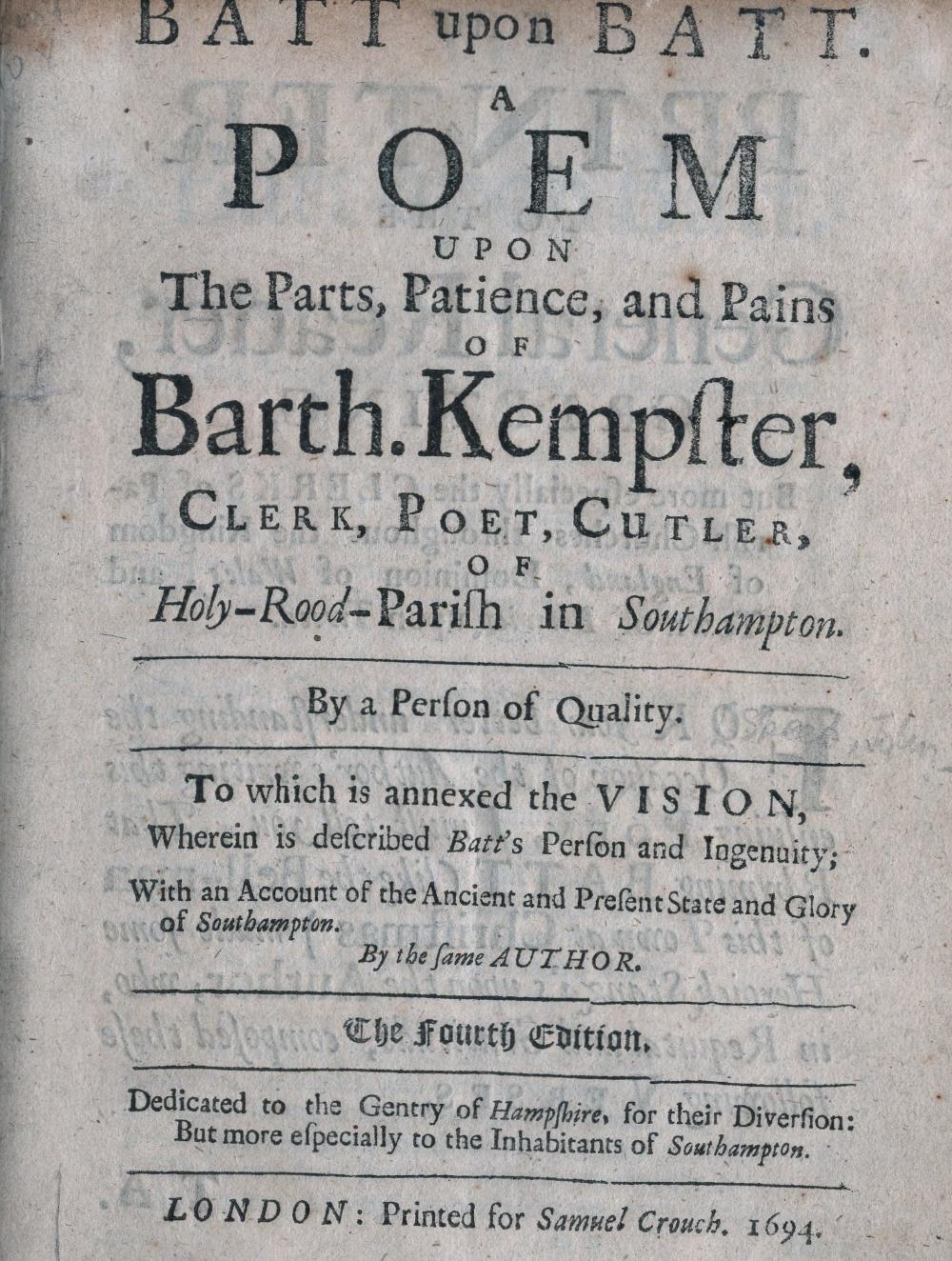

John Speed is a familiar name in Southampton because of three publications each involving a different John Speed.
The first is the plan of the town published in 1611 in John Speed's atlas "The Theatre of the Empire of Great Britaine". Southampton's plan was included with the Isle of Wight as there wasn't room on the Hampshire page. Speed probably visited the town to survey his plan. He was born in Cheshire in 1552 but lived in London. He was a tailor who early in life turned his hand to map making and developed a keen interest in history. He was encouraged in his work by several patrons including Queen Elizabeth I. He married Susanna Draper and had a total of 18 children including a son also named John. He died in 1629.

The second publication is a poem written by John Speed the cartographer's grandson. This John was born in 1628 at Oxford and was a scholar at St John's College. As a Royalist he was turned away from the College for defending the King and in 1648 he lived at Grove Place, Nursling with Sir Henry Knollys whose mother was Margaret Fleming. Sir Henry had been a loyal servant to Charles I.
In 1667, John Speed settled in Southampton where he practiced as a doctor and lived behind Holyrood Church. It was here that he met Bartholomew Kempster the parish clerk who was renowned for his verse. Kempster had written verse about the doctor who replied with a poem he published as a book called "Batt upon Batt. A poem upon the Parts, Patience and Pains of Bartholomew Kempster, Clerk, Poet and Cutler of Holyrood Parish in Southampton". This went to seven editions with two editions published after Speed's death in 1711. It would appear that Southampton was populated by men of verse as Isaac Watts was also a resident at that time. He was Mayor of Southampton in 1681 and again in1694. It is the son of this John Speed whose tomb is in Holyrood Church.
The final publication is "The History and Antiquity of Southampton" written by the great, great-grandson of the cartographer with whom he shared the same love of history and was born in Southampton in 1703. This John was also a doctor and lived behind Holyrood Church. Just a short walk from his home was the Audit House where the historical manuscripts of the Corporation of the Town were stored albeit in a state of some disorder. With access to these documents, Speed produced the manuscript for his book. On his death in 1781 the manuscript passed to his son John who was the Vicar of Eling and from his widow Harriot nee Davies to the Corporation. It was published as a limited edition of 250 copies by the Southampton Record Society in 1909.